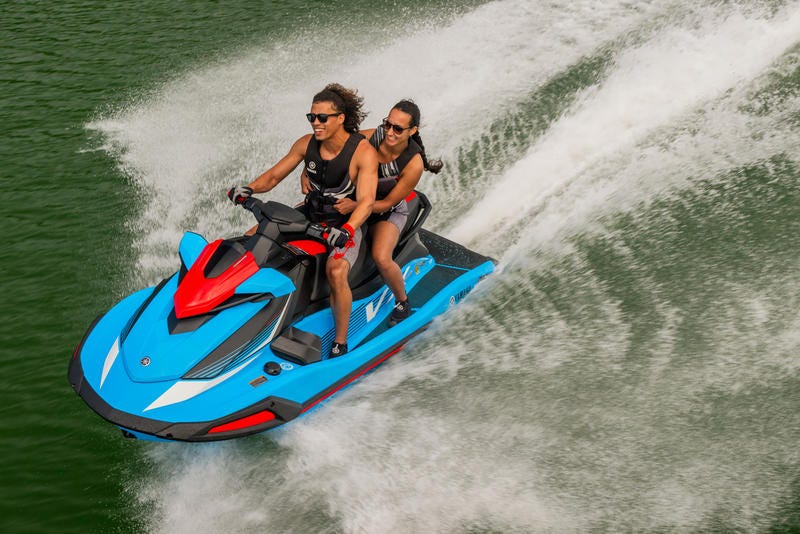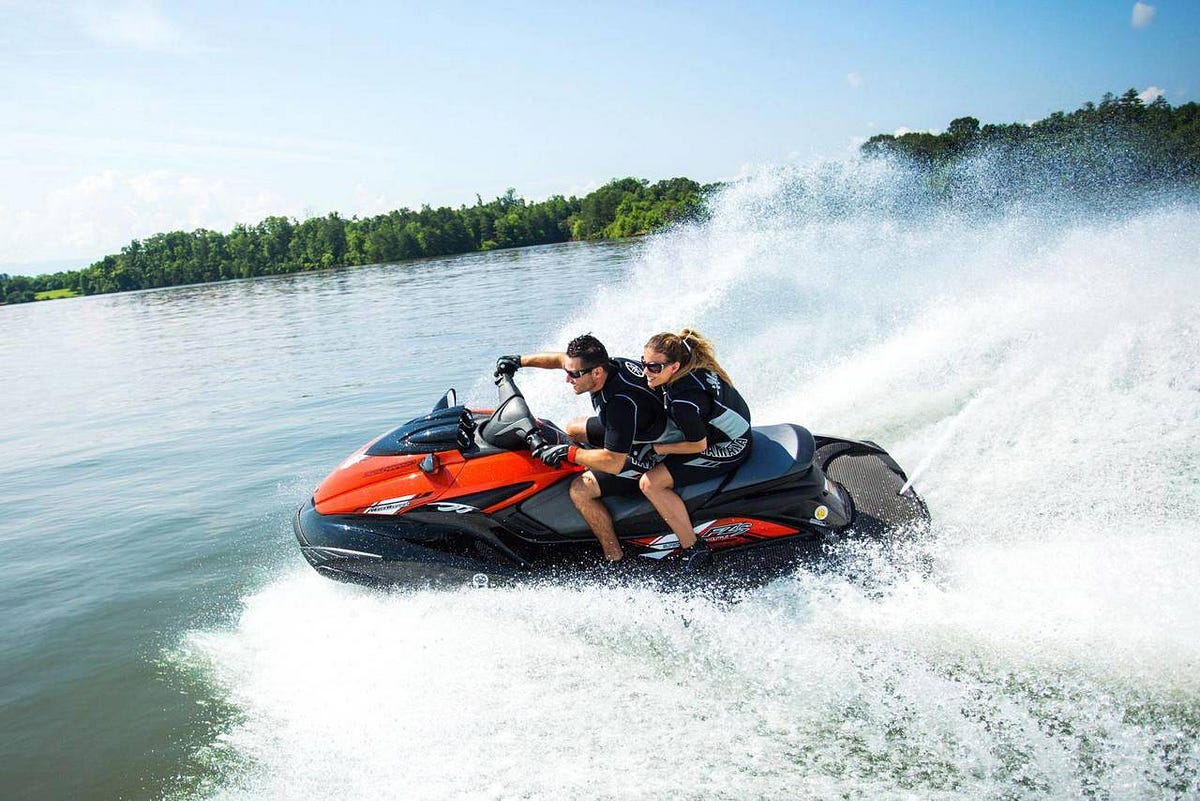Unleashing the Thrill: The Ultimate Jet Ski Competition

Get ready to experience the adrenaline rush like never before as the ultimate Jet Ski competition takes center stage! If you’re a fan of the Jet Skiing industry or just love the thrill of high-speed watersports, this is an event you won’t want to miss. Picture yourself watching the best riders showcase their skills and push the limits of what’s possible on these powerful machines. And if you’re a seasoned Jet Skier yourself, why not participate and compete against the best? To make sure you’re fully prepared, we highly recommend renting your Jet Ski from the watersport experts at A2Z Powersport. Located in Orange Beach AL, at the Fort Morgan Marina, they offer top-notch equipment and can be reached at (954) 296 1862 or bookings@a2zpowersport.com. So mark your calendars and get ready to unleash the thrill at the ultimate Jet Ski competition!
Preparing for the Ultimate Jet Ski Competition
Jet ski competitions and tournaments are thrilling events that showcase the skill and expertise of jet skiers from around the world. Whether you are a seasoned competitor or a newcomer to the sport, it is essential to prepare yourself for the ultimate jet ski competition. By following a few key steps, you can enhance your chances of success and have an unforgettable experience. In this article, we will delve into the different aspects of preparation, mastering the art of jet ski racing, strategies for success, safety measures, the rules and regulations involved, and the thrills and challenges of wave jumping. So, let’s dive in!
This image is property of ae01.alicdn.com.
Choosing the Right Jet Ski
Selecting the right jet ski is the first step in preparing for a competition. Consider factors such as engine power, maneuverability, and stability. Different jet skis have varying features and capabilities, so it’s important to find one that suits your style of racing. Additionally, ensure that the jet ski is well-maintained and in top condition to prevent any mechanical issues during the competition.
Required Safety Gear
Safety is paramount in jet ski competitions. Before hitting the water, make sure you have all the necessary safety gear. This includes a well-fitting life jacket, a sturdy helmet, goggles to protect your eyes, and appropriate footwear. It is crucial to invest in high-quality safety gear to protect yourself in case of any accidents or mishaps.
Fitness and Training
Jet ski racing requires a combination of strength, endurance, and agility. Engaging in regular fitness training is essential to prepare your body for the physical demands of the competition. Incorporate exercises such as cardio, strength training, and flexibility exercises into your routine. Additionally, practice specific jet ski maneuvers and simulate race scenarios to improve your skills and build confidence.
Mental Preparation
Mental preparation is just as important as physical training when it comes to jet ski competitions. Visualize yourself navigating through the racecourse with precision and speed. Develop a positive mindset and learn techniques to manage stress and nerves. Mental preparation will help you stay focused, make quick decisions, and adapt to challenging situations during the competition.
Mastering the Art of Jet Ski Racing
To excel in jet ski racing, it is crucial to master various techniques and skills. Understanding the course, honing cornering techniques, learning acceleration and speed control, and maneuvering through choppy waters are essential aspects to focus on.
Understanding the Course
Before the competition, familiarize yourself with the racecourse. Take note of the number of laps, the locations of buoys, and any potential obstacles. Understanding the course layout will enable you to plan your strategies and identify the best lines to take for optimum speed and efficiency.
Cornering Techniques
Cornering is a critical skill in jet ski racing. Practice different cornering techniques such as leaning into the turn, applying the right amount of throttle, and maintaining balance and control. Mastering cornering techniques will help you maintain speed and maneuver through tight turns with ease.
Acceleration and Speed Control
The ability to accelerate quickly and maintain control over your speed is essential in jet ski racing. Practice accelerating from a standing start and learn to modulate the throttle to find the right balance of speed and stability. This skill will allow you to gain an advantage during starts, overtake competitors, and navigate changing conditions successfully.
Maneuvering through Choppy Waters
Jet ski competitions often take place in challenging water conditions, including choppy waves. Learning how to effectively navigate through rough waters will give you an edge over your competitors. Maintain a stable stance, use your legs as shock absorbers, and adjust your riding technique to adapt to the changing water conditions.
Strategies for Success in the Jet Ski Competition
In a highly competitive sport like jet ski racing, having effective strategies is essential. Analyzing competitors, mastering starts and turns, maintaining stamina, and executing strategic passing maneuvers can greatly improve your chances of success.
Analyzing Competitors
Study your opponents before the competition begins. Observe their racing styles, strengths, and weaknesses. By understanding your competitors, you can plan your own strategies accordingly. Keep an eye out for their underwater lines, preferred overtaking spots, and tactics during starts and turns.
Effective Starts and Turns
A strong start can set the tone for the entire race. Practice your starts to ensure you get off the line quickly and smoothly. Additionally, work on your turning techniques to minimize time loss during corners. Learning how to maintain speed and control while executing sharp turns will give you an advantage over your competitors.
This image is property of i.ytimg.com.
Maintaining Stamina
Jet ski racing can be physically demanding, especially during longer races. Building and maintaining stamina is crucial to perform consistently throughout the competition. Incorporate endurance training into your fitness routine and work on maintaining a high level of energy and focus throughout the race.
Strategic Passing
Passing opponents can be a crucial move in jet ski racing. Identify the most opportune moments to overtake, such as when competitors make mistakes or when there is a clear opening on the racecourse. Plan your passing maneuvers strategically and execute them confidently to gain an advantageous position.
Safety Measures in Jet Ski Competitions
Safety should always be a top priority in jet ski competitions. Adequate measures should be in place to ensure the well-being of competitors and spectators. This includes having trained lifeguards and safety personnel, emergency response plans, regular safety equipment checks, and thorough course inspections.
Lifeguards and Safety Personnel
The presence of trained lifeguards and safety personnel is essential in jet ski competitions to promptly respond to any emergencies or accidents. These professionals should be well-equipped and knowledgeable about the specific safety measures required in a race setting.
Emergency Response Plans
Comprehensive emergency response plans should be in place, outlining procedures for various scenarios such as injuries, collisions, or equipment malfunctions. Competitors should be briefed on these plans and be aware of the designated emergency contact points and medical facilities available.
Safety Equipment Checks
Regular safety equipment checks should be conducted to ensure that all competitors have functioning and appropriate safety gear. This includes checking life jackets, helmets, goggles, and other essential safety equipment to ensure they meet the required standards.
This image is property of i0.wp.com.
Course Inspection
Before the competition begins, the racecourse should be thoroughly inspected for any potential hazards or obstacles. This includes checking for submerged objects, assessing water conditions, and ensuring that all buoys and markers are properly placed. Regular inspections should also be conducted throughout the event to maintain course safety.
Jet Ski Competition Rules and Regulations
Jet ski competitions are governed by a set of rules and regulations to ensure fair play and safety. It is essential for participants to familiarize themselves with these rules and understand how they are enforced. Key aspects include participant eligibility, scoring and timekeeping methods, disqualification factors, and procedures for appeals and protests.
Participant Eligibility
Different competitions may have specific requirements and eligibility criteria for participants. This can include factors such as age restrictions, skill requirements, and licensing regulations. Make sure you meet all the necessary criteria before registering for a competition.
Scoring and Timekeeping
Scoring and timekeeping methods vary depending on the competition format. Common methods include recording lap times, assessing penalties for rule violations, and awarding points based on finishing positions. Familiarize yourself with the scoring and timekeeping systems used in the specific competition you are participating in.
Disqualification Factors
Certain actions and behaviors can lead to disqualification from a jet ski competition. This can include dangerous riding, failing to adhere to course rules, violating safety protocols, or engaging in unsportsmanlike conduct. Understand the disqualification factors and ensure that you race in a fair and responsible manner.
Appeals and Protests
In the event of a dispute or disagreement regarding a decision made during a competition, procedures for appeals and protests should be in place. Familiarize yourself with these procedures and understand the timeline and requirements for lodging an appeal. This ensures that competitors have a fair opportunity to address any grievances.
Thrills and Challenges of Wave Jumping
Wave jumping is a thrilling aspect of jet ski competitions that captivates both participants and spectators. It requires a combination of technique, skill, and safety considerations. Let’s explore some key factors to consider when perfecting your wave jumping abilities.
This image is property of miro.medium.com.
Techniques for Catching Air
Mastering the techniques for catching air is critical in wave jumping. Practice timing your throttle control and body positioning to hit the waves at the optimal angle and speed. Develop a sense of anticipation for the waves and learn how to adjust your technique based on their size and shape.
Landing and Recovery
Equally important to catching air is mastering the landing and recovery process. Learn how to maintain stability and balance upon landing, absorbing the impact with your body and legs. Practice controlled landings to prevent excessive bouncing or loss of control, ensuring a smooth transition back onto the water.
Safety Considerations
Due to the inherent risks involved in wave jumping, safety considerations must be given top priority. Always wear appropriate safety gear, including a helmet and life jacket. Be aware of your surroundings and potential hazards, such as other competitors or boats in the vicinity. Additionally, be mindful of changing weather conditions and how they can affect wave patterns.
Perfecting Tricks
Wave jumping provides the opportunity to showcase your skills and creativity through tricks and aerial maneuvers. Practice various tricks such as backflips, barrel rolls, and combinations of aerial moves. Perfecting these tricks adds flair and excitement to your performance while impressing both judges and spectators.
Mastering Tight Slalom Courses
Tight slalom courses test your precision and control as you navigate through a series of closely spaced gates. To excel in these courses, focus on nailing the gates, maintaining proper body positioning, balancing control and speed, and setting up for the next gate.
Nailing the Gates
In tight slalom courses, accuracy is key. Aim to pass through each gate as close to the center as possible, minimizing the distance traveled and the time taken. Practice your timing and maneuverability to ensure you hit each gate perfectly, avoiding penalties for missed or clipped gates.
This image is property of miro.medium.com.
Proper Body Positioning
Maintaining the correct body positioning throughout the slalom course is crucial. Keep your body centered and balanced, with your weight evenly distributed on the jet ski. This helps maintain stability and allows for quick and precise movements as you navigate through the gates.
Maintaining Balance and Control
In tight slalom courses, maintaining balance and control is essential. Practice riding in a controlled manner, making slight adjustments to your body positioning and throttle control to maintain stability. Focus on smooth and precise movements rather than excessive speed, as control is paramount in these courses.
Setting Up for the Next Gate
As you approach each gate, focus on setting yourself up for the next gate. Anticipate the positioning and spacing of the gates ahead, and adjust your line and speed accordingly. Smooth and calculated transitions between gates will enable you to maintain speed and momentum throughout the course.
The Role of Equipment in Jet Ski Competitions
The equipment used in jet ski competitions plays a crucial role in determining performance and overall success. Considerations such as choosing the right wetsuit, understanding the impact of hull design, engine modification possibilities, and optimizing performance with accessories can significantly enhance your racing capabilities.
Choosing the Right Wetsuit
A well-fitting wetsuit is essential in jet ski competitions to ensure comfort and maintain body temperature. Consider factors such as material, thickness, and flexibility when selecting a wetsuit. It should provide adequate insulation, freedom of movement, and protection against water resistance.
Impact of Hull Design
The hull design of a jet ski can have a significant impact on performance. Different hull shapes and designs offer varying levels of stability, maneuverability, and speed. Research and understand the different hull designs available, and choose one that aligns with your racing style and competition requirements.
Engine Modification Considerations
Engine modifications can further enhance the performance of a jet ski in competitive racing. Consult with experts or experienced racers to understand the possibilities for engine modifications, such as upgrading the intake and exhaust systems, optimizing fuel delivery, and enhancing engine cooling. However, always adhere to competition rules and regulations regarding modified engines.
Optimizing Performance with Accessories
Accessories can also play a role in optimizing performance. Consider additions such as hydrofoils or trim tabs for increased stability, high-performance impellers for better acceleration, and aftermarket exhaust systems for improved engine efficiency. However, be mindful of any restrictions on accessory usage imposed by competition rules.
Jet Skiing Tips from the Professionals
Learning from professionals who have experienced success in the jet ski racing world can offer valuable insights and guidance. Incorporate these tips into your training and racing routines and reap the benefits of their wisdom.
Proper Warm-up and Stretching
Before entering the water, always warm up your body and stretch your muscles. This helps prevent injuries and improves performance. Engage in dynamic warm-up exercises and focus on stretching key muscle groups used during jet ski racing, such as the arms, legs, and back.
Visualization Techniques
Visualization techniques can significantly enhance your racing performance. Spend time before races visualizing yourself successfully navigating the course, executing maneuvers with precision, and crossing the finish line victoriously. This mental imagery helps build confidence and prepares you for various race scenarios.
Dealing with Pressure and Nerves
Nerves and pressure can affect performance in jet ski competitions. Develop coping strategies to manage these emotions effectively. Deep breathing exercises, positive self-talk, or engaging in mental distractions before races can help calm your mind and allow you to focus on your race plan.
Continuous Improvement
Jet ski racing is a sport that requires constant learning and improvement. Reflect on each race, analyze your performance, and identify areas for improvement. Seek feedback from experienced racers or coaches and be open to incorporating their suggestions into your training regimen. Embrace a growth mindset and stay committed to continuous improvement.
The Rise of Jet Ski Competitions
Jet ski competitions have experienced a significant rise in popularity over the years, captivating participants and audiences alike. Let’s explore the historical development, growing popularity, professional circuits and leagues, and prominent jet ski competitions that have contributed to the sport’s rise.
Historical Development
Jet ski competitions evolved from the pioneering days of personal watercraft, which began in the 1960s. With the advancement of technology and the increasing popularity of jet skis, organized races and competitions emerged, driven by the thrill and excitement the sport offered.
Growing Popularity
Jet ski racing has gained widespread popularity due to its high-octane action and unique blend of skill and agility. The accessibility of jet skis and the relatively low barriers to entry have attracted a diverse range of participants, contributing to the sport’s growing popularity worldwide.
Professional Circuits and Leagues
The establishment of professional circuits and leagues has provided an avenue for elite jet ski racers to showcase their skills and compete at the highest level. Organizations such as the International Jet Sports Boating Association (IJSBA) and the Pro Watercross Tour organize professional races and events that draw top-tier talent from around the globe.
Prominent Jet Ski Competitions
Numerous prominent jet ski competitions have become highlights of the racing calendar. Events such as the IJSBA World Finals, the King’s Cup in Thailand, and the Pro Watercross National Championships attract top competitors and offer thrilling spectacles for spectators. These competitions serve as platforms for showcasing talent and pushing the boundaries of the sport.
In conclusion, participating in a jet ski competition requires careful preparation, mastering of essential skills, strategic planning, adherence to safety measures and regulations, and continuous improvement. By dedicating time and effort to these aspects, you can enhance your racing abilities and maximize your chances of success in the thrilling world of jet ski competitions. So, gear up, hit the water, and unleash the thrill of jet ski racing!













